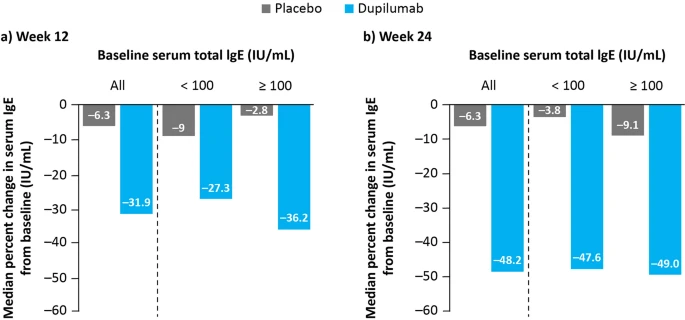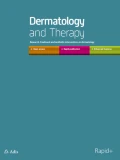Abstract
Introduction
In chronic spontaneous urticaria (CSU), interleukin (IL)-4 and IL-13 may promote mast cell activation directly via IL-4 receptor expression, or indirectly via upregulated immunoglobulin E (IgE) production. Dupilumab significantly improved CSU signs and symptoms in the phase 3, randomized, placebo-controlled LIBERTY-CSU CUPID Study A. This analysis explores the impact of dupilumab on CSU signs and symptoms and serum IgE levels in patients from LIBERTY-CSU CUPID Study A with serum total IgE above and below 100 IU/mL at baseline.
Methods
Patients with H1-antihistamine-refractory CSU received dupilumab (n = 70) or placebo (n = 68) for 24 weeks.
Efficacy endpoints were change from baseline to weeks 12 and 24 in serum total IgE levels, Itch Severity Score over 7 days (ISS7), Urticaria Activity Score over 7 days (UAS7), and Hives Severity Score over 7 days (HSS7) in dupilumab- or placebo-treated patients with serum total IgE above and below 100 IU/mL at baseline.Results
 |
| Median percent change in serum total IgE at a week 12 and b week 24 in dupilumab- or placebo-treated patients with baseline IgE levels < 100 IU/mL or ≥ 100 IU/mL. |
Conclusions
Dupilumab significantly improved CSU signs and symptoms and reduced serum IgE, regardless of baseline IgE levels. In the current analysis, baseline total IgE had no predictive value as a dupilumab treatment response biomarker in CSU. Downregulation of IgE, a key mediator of mast cell activation and histamine release, may at least partially explain the effectiveness of dupilumab in reducing CSU signs and symptoms.

No comments:
Post a Comment